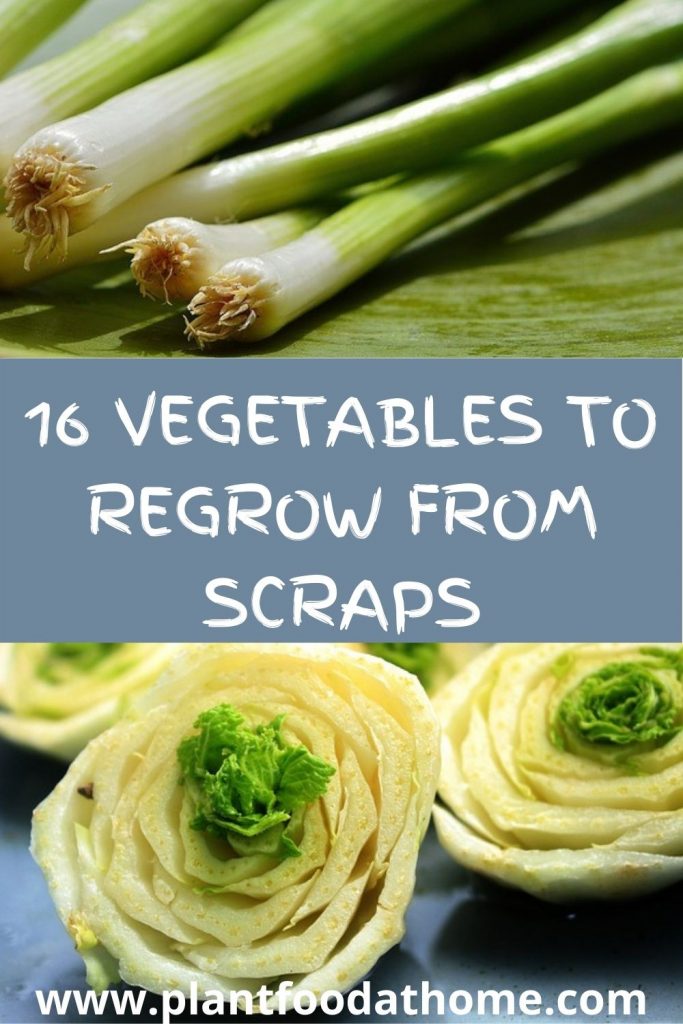Regrowing vegetables from kitchen scraps is a great way to start growing your own food. Not only that, but you can reduce food waste and start new plants for free. So here is a list of 16 vegetables you can regrow from kitchen scraps at home.
Table of Contents
1. Avocado
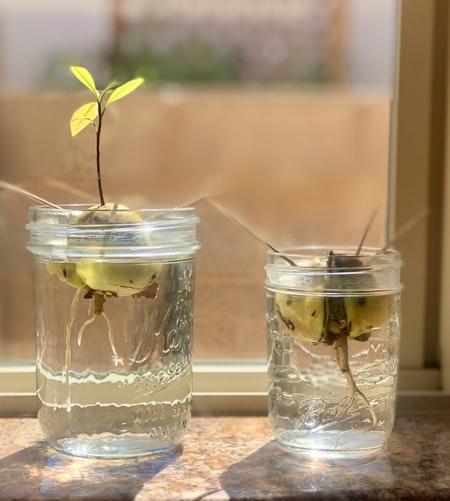
Avocado seeds can be used to grow as a fun project to do with your kids. To start growing avocado from seed, remove and wash the avocado seed and insert toothpicks into the middle of the seed all around the perimeter. The toothpicks will suspend the seed over water in a bowl or jar while it regrows into an avocado tree.
The water in the bowl or jar should cover the bottom inch of the seed. Place the jar with avocado seed in a warm place out of direct sunlight. Check the water daily, changing it every few days and adding more as needed. It can take up to 6-weeks for the stem and roots to appear on the seed.
When leaves begin appearing, it’s time to plant the seed in garden soil or potting soil. Leave one-half of the seed above ground when planting.
You should know: avocado plants can take upwards of 7 years to fruit. Many varieties also need another avocado tree as a pollinator. But did you know, avocado trees also make attractive houseplants? You can read more in our in-depth article How to Grow Avocados Indoors.
2. Bok Choy
Save the leftover base of the Bok Choy to regrow this leafy green vegetable. Place the bok choy base in a bowl with just a bit of water in the bottom. Place the bowl in a location that gets good indirect sunlight and mist with water twice a week.
When new roots and leaves begin to develop on the old Bok Choy you can transplant the regrown vegetable into a container of potting soil or into an in-ground garden plot.
3. Bean Sprouts
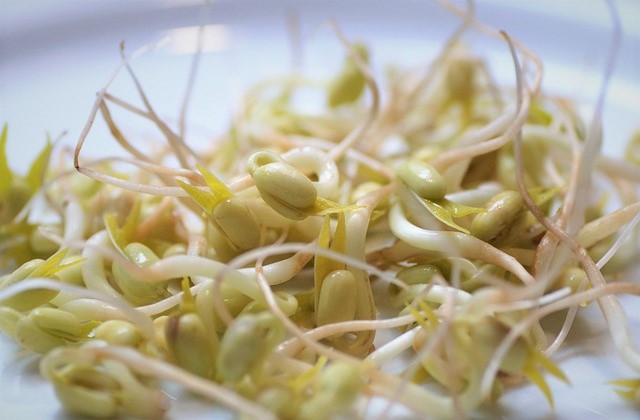
Bean sprouts are a favorite vegetable to eat raw or cooked and are easy to regrow from scraps. You could use organic beans to ensure they are chemical-free but you can use whatever you have available.
For around 1 cup of sprouts, place 1 tablespoon of mung beans in a jar and cover with warm water. Allow beans to soak for around 8 hours or overnight. Drain and rinse the beans off and place a piece of window screen cut to size to fit over the top of the jar, securing it in place with a rubber band. If you don’t have the screen you can buy a sprouting lid like this one to fit a wide mouth mason jar or even a spouting kit such as this one.
Turn the jar upside down to allow all the water to drain – you might want to do this on the drying rack or into a bowl, draining upside-side down at a 45-degree angle. Rinse the beans with water 2-3 times a day by filling the jar with water to flush them. This is important to keep the sprouts healthy and stop bacteria from growing. Then turn them upside down to drain each time.
Spouts grow quickly and will take only 4-6 days before you can eat them. You can let them grow a little longer for bigger spouts.
You can also try this method with a number of different legumes such as lentils, alfalfa, soya beans and black eyed beans as well as other seeds such as broccoli.
4. Cabbage
It’s easy to regrow a new cabbage head from the base of the cabbage, including Chinese cabbage. Place the cabbage bottom in a shallow container with 1-inch of water.
Keep the bowl in bright indirect light and mist the base with water a couple of times each week.
Over the following days, new roots and leaves will appear and they can be transplanted into a container of potting soil or into an in-ground garden plot.
5. Celery
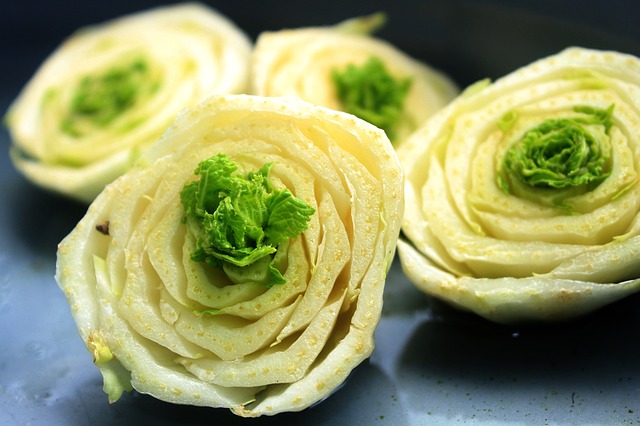
Celery is one of the easiest foods to regrow from vegetable scraps. To regrow celery, cut the celery stalks off so you are left with the base of the celery. Then lay the celery base in a bowl with 1-inch of water in the bottom.
Place the bowl in indirect sunlight and after about a week, new leaves will being to grow along the base. When this happens, you can transplant your celery in garden soil or potting soil so it can continue to regrow to full size.
You can read more about growing celery in this article: How To Grow Celery For Juicing.
6. Garlic
Garlic is really easy to regrow and can be grown from just one clove. Remove one firm clove of garlic from a bulb you have on hand and plant it with the roots facing down in potting soil.
Moisten potting soil and place the container in direct sunlight.
In 1-2 weeks new shoots will grow from the bulb. Garlic typically takes 8 months to mature.
Save a clove of the freshly harvested garlic to regrow over and over.
For more details you can read our guide here: How To Grow Garlic: Growing And Harvesting The Best Garlic
7. Ginger

Ginger root is very simple to regrow and you can easily keep a fresh supply of ginger growing in your kitchen year-round. Plant a small piece of ginger root into a container of potting soil, making sure that the buds face upwards. Place the container with planted garlic in a bright, warm location.
In a few weeks, new shoots and new roots will develop. After harvesting, save a piece of the ginger root so that you can replant it and regrow ginger over and over again.
For more in-depth growing instructions for growing ginger, see our article Guide To Growing Ginger At Home.
8. Lemongrass
Lemongrass is not always available at the supermarket, and the delicate lemony flavor it adds to recipes is very desirable. To ensure you have a steady supply of fresh lemongrass, regrow your own.
Lemongrass will regrow just like regular grass. Place the root that is leftover in a glass bowl or jar with enough water to cover it and place it in indirect light. New growth will appear in 7-10 days and it will be ready to transplant into a container of potting soil or into an outdoor herb garden.
Related reading: How To Grow Lemongrass: Planting and Growing Guide.
9. Onions
Onions can be regrown indoors or out from scraps. Save the cut portion of the root (hairy end) with about a half an inch of onion attached. Place in a container of potting soil, cover lightly with potting soil, moisten soil, and place the container in a sunny area.
If you would like to learn more about growing onions, you might like to read Growing Bulb Onions: 20 Things You Should Know.
10. Green Onions
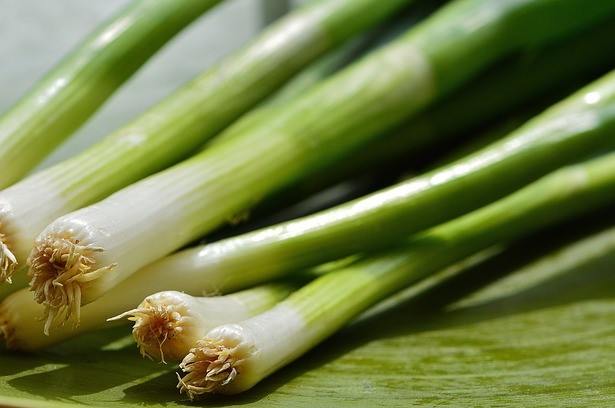
To regrow green onions (also called scallions), simply put the white base with the roots intact in a container of water and place in indirect sunlight. Change the water every 3 days and the green tops will continue to grow. Just snip off what you need and allow it to continue regrowing.
For best results, replant green onions in the garden or in a pot. Once they have regrown, they can be cut back to just above the soil level and they will regrow again.
Green onions are one of the best vegetables to regrow from scraps. They are so easy and provide many harvests once they have been replanted in the soil.
This method also works to regrow leeks and to regrow lettuce, provided the roots are intact.
11. Pineapples
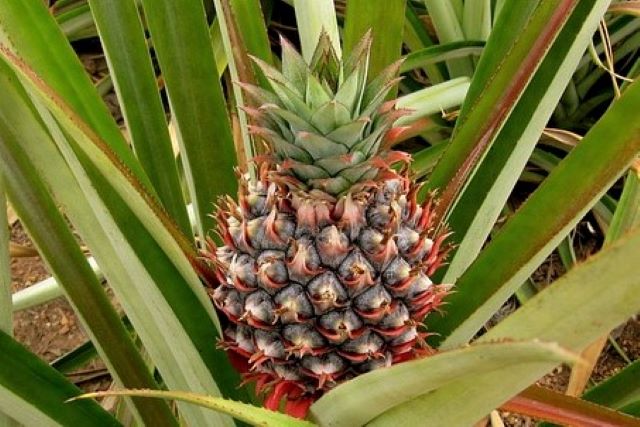
Pineapples are so much fun to regrow and you don’t have to live in a tropical climate to grow and enjoy fresh pineapple.
To regrow pineapple, you will need a pineapple with the top still attached – that’s the spiky green ‘hair’ on top. Cut the top off a whole pineapple and insert a few toothpicks around the perimeter to hold it above a container filled with water. Only allow the bottom of the cut end to barely touch the water.
Place the container in indirect sunlight in a warm location, either indoors or outdoors.
Change the water every other day. In a few weeks, new roots will begin to develop and the newly regrown pineapple plant can be transplanted into a large container of potting soil.
Regrowing a pineapple takes around 18 months. From one pineapple top, you will grow one pineapple fruit. A fun project to undertake for the patient gardener.
12. Pumpkins
Save the seeds from decorative pumpkins used in the fall and plant them. Even a decaying Halloween jack-o-lantern will contain viable seeds that can easily be regrown.
Spread the seeds out in a single layer on the ground in a sunny area. Cover seeds with 1-inch of soil and water well. You can also dig a hole and plant the entire pumpkin.
The seeds will lay dormant until the soil warms up in spring, then they will germinate and develop pumpkin vines that will grow lots of pumpkins.
We have a complete guide here to Growing Pumpkins Successfully At Home. And did you know you can also eat the pumpkin leaves?
13. Peppers
All varieties of sweet and hot peppers can be regrown from the leftover seeds. Save the seeds from bell peppers, banana peppers, habaneros, jalapenos, or any other pepper you like.
Plant them in a container of potting soil and place in a sunny location.
In late spring or summer, the saved pepper seeds can be planted directly outdoors in the garden soil. Continue to save seeds from harvested peppers for replanting.
Related: Bell Peppers Not Germinating? 6 Tips to Sprout Them
14. Potatoes
Everyone has seen sprouts (also called eyes) that form on the skin of potatoes and this is what new potato plants develop from. Peelings that have sprout (eyes) on them can be used to regrow potatoes.
Cut peelings with eyes into 2-inch pieces, ensuring that there are at least two or three eyes on each piece. Allow them to dry out overnight and then plant them about 4-inches deep into garden soil or large container filled with potting soil.
The potato eyes must be facing up when planted. In a few weeks, the potato plant begins to grow and new potatoes will develop under the soil. When the plant reaches maturity it will produce a few small blooms, then the plant will begin to die. This is a signal that the potatoes under the soil are ready to harvest.
You should know: grocery store-bought potatoes can carry diseases which can get into your soil. It’s best to use seed potatoes for growing as they are disease-free or grow them in a pot.
Related: Can You Plant Sprouted Potatoes? (And How!)
15. Sweet Potatoes
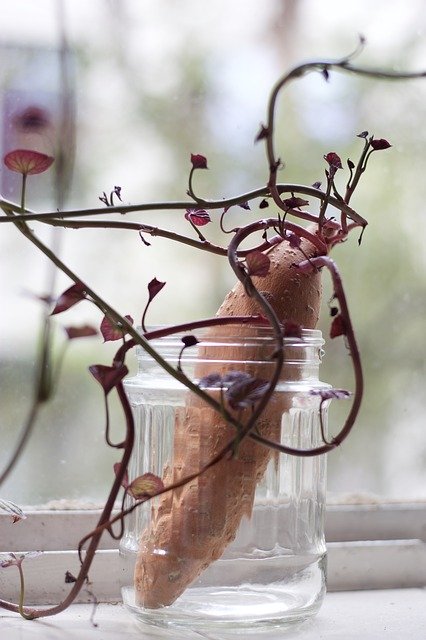
Sweet potatoes can be regrown by cutting a sweet potato with sprouts in half and suspend above a container of water by inserting toothpicks around the perimeter. The bottom inch of the sweet potato must be in the water.
Roots will begin to develop in a few weeks and the sprouts will begin to enlarge and grow.
When the sprouts reach about 4-6 inches long, cut them off and place them in a container of water. These sprouts are now called sweet potato ‘slips’ and will create a plant in a few weeks.
Add water as needed to the container of slips and when the roots reach about an inch in length, the slips can be planted in a large container of potting soil or into the garden.
Tip: sweet potato vine leaves are edible! Use them in a stir fry as you would other leafy greens.
You can read our full guide here on How to Start Sweet Potato Slips for Growing Sweet Potatoes (With Photos).
16. Tomatoes
Tomatoes can be regrown from the seeds found inside the popular vegetable. Save some of the seeds, rinse them, and allow to dry. Plant seeds in a small container of potting soil until they germinate. Place the container of planted tomato seeds in a sunny location and keep soil moist.
When seedlings are 4-6 inches tall transplant them outdoors during warm weather. During cold weather grow the tomatoes indoors in a large container.
You can read more on growing tomatoes in pots in our article How To Grow Tomatoes In Pots.
Regrowing Vegetable Tips
- When regrowing vegetables in water, change the water regularly to avoid the food turning into a slimy mess. Warmer weather will mean more frequent water changes. For best results, change the water daily. But every 3-4 days is fine in cooler weather.
- Plants will do best in bright indirect light while they are establishing new roots.
- When you are ready to transfer your new plant from indoors to an outdoor environment, do so gradually. This process is called ‘hardening off’. Start by placing the plants in a few hours of morning sunlight and increasing the time over a period of 7-10 days. You can read more in our article Hardening off Seedlings.
Conclusion
There are lots of tasty vegetables you can regrow from scraps. It’s fun, rewarding and reduces waste. So now you know how to regrow vegetables from kitchen scraps, which one will you try?
Some of My Favorite Kitchen Items:
Further reading:
- How To Grow Sugar Snap Peas: Growing Guide And Tips
- How To Grow A Mango From Seed And By Grafting
- Best Tomatoes To Grow in Pots
- How To Grow Delicious Lettuce – Fast Growing Vegetable
- How to Grow Avocados Indoors – And Will They Fruit?
- 11 Herbs to Grow Indoors (and How to Grow Them)
